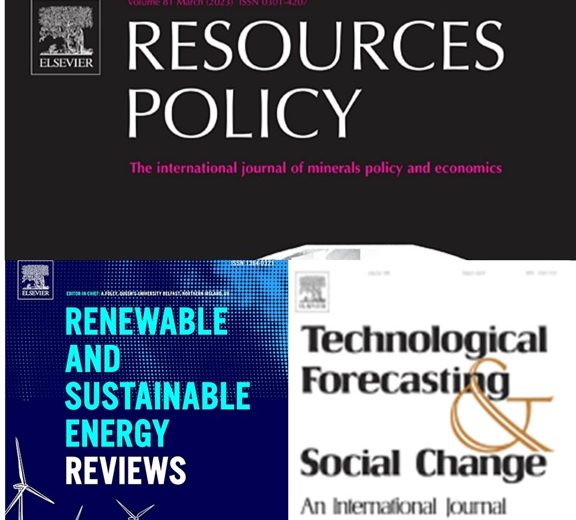Staff papers on energy transition, green growth and digital finance

Senior Research Specialist of the CAREC Institute, Dr. Asif Razzaq, has published three papers on subjects of the energy transition, green energy and digital finance. His most recent paper “Dynamic and threshold effects of energy transition and environmental governance on green growth in COP26 framework” is published in one of the top journals in the energy field — Renewable and Sustainable Energy Reviews (JCR-Q1), co-authored with Arshian Sharif, Ilhan Ozturk and Sahar Afshan. Authors applied a dynamic panel threshold model and found significant evidence of the dynamic relationship between energy transition, environmental regulations, and green growth in 37 International Energy Agency economies from 2010 to 2020. Using a newly constructed composite energy transition index (ETI) the authors found that the threshold of 0.485 of the ETI serves as a breakeven point for determining low and high green growth. Environmental regulation plays a significant and positive role for green growth, and its marginal contribution towards green growth is more substantial if the environmental regulation score is higher than 0.604. The combined impact through the interactive term of energy transition and environmental regulations reflects a more substantial impact than their individual effects. Noticeably, the lagged effects of ETI and environmental regulations are more substantial and positive, which implies that a certain time lag is required to materialize the full benefits of green growth. These results suggest inclusive and long-term policy for energy transition and governance is imperative to achieve green growth agenda.
Another paper “Inclusive infrastructure development, green innovation, and sustainable resource management: Evidence from China’s trade-adjusted material footprints”, coauthored with Arshian Sharif, Ilhan Ozturk and Marinko Skare, is published in Resources Policy Journal (JCR-Q1). The paper analyzes the asymmetric impact of resource depletion associated with Chinese infrastructure development and urbanization by controlling the effects of green innovation and economic growth from 1990 to 2018. The long-run results show that infrastructure development, urbanization, and economic growth significantly contribute to consumption-based material footprint. The positive impact of infrastructure development is highest for higher quantiles of the consumption-based material footprint, while the impact of urbanization is highest at lower quantiles. And, green innovation significantly decreases the consumption-based material footprint, mainly at higher quantiles.
The third paper “Digital finance and green growth in China: Appraising inclusive digital finance using web crawler technology and big data” is co-authored with Xiaodong Yang and published in one of the top journals — Technological Forecasting and Social Change (JCR-Q1). This paper examines the influence of digital finance on green growth using China’s city-level data from 2008 to 2019. The authors found that the influence of digital finance is more pronounced in eastern and central regions of China than in the western region. The paper concludes that digital finance encourages green growth by supporting the digital transformation of enterprises and addressing energy poverty.